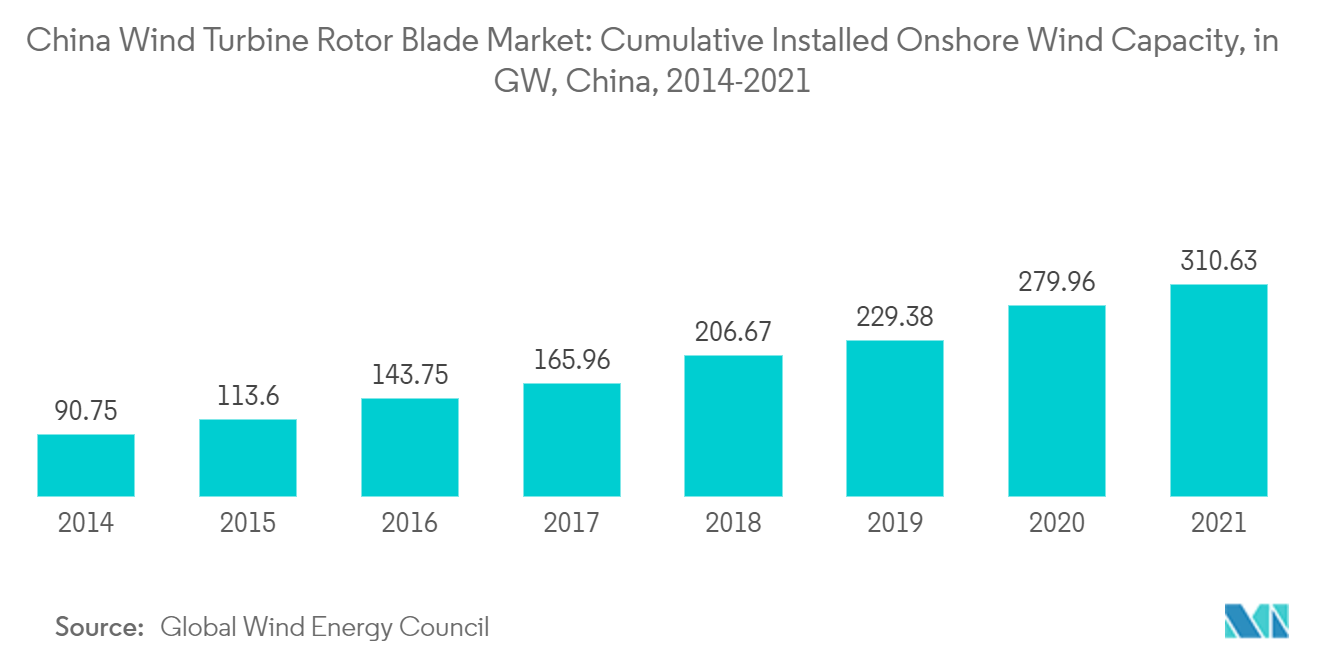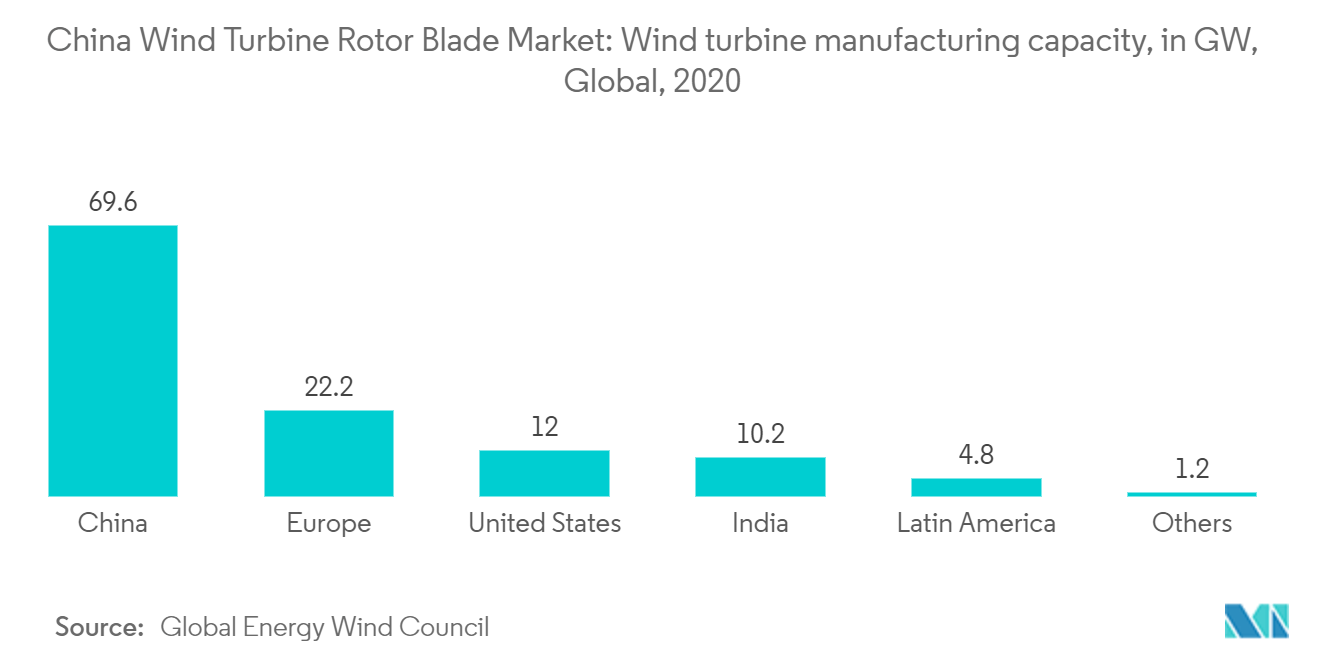Market Trends of China Wind Turbine Rotor Blade Industry
This section covers the major market trends shaping the China Wind Turbine Rotor Blade Market according to our research experts:
Onshore Segment to Dominate the Market
- Onshore wind energy power generation technology has evolved over the last five years to maximize electricity produced per megawatt capacity installed and to cover more sites with lower wind speeds. Besides this, in recent years, wind turbines have become larger with taller hub heights, broader diameters, and larger wind turbine blades.
- According to the Global Wind Energy Council, in 2021, the onshore wind turbine capacity additions in China registered 37.35 GW, with an 11.03% growth compared to 2020. This explosive growth was due to high investments in renewable energy in China. The country's onshore wind energy installed capacity increased to 310.62 GW in 2021 from 279.95 GW in 2020.
- According to International Renewable Energy Agency (IRENA), China is expected to dominate the onshore wind power industry, with more than 50% of global installations by 2050. Also, due to the high population, high electricity demand in the country is expected to promote growth in wind energy. Many multinational corporations, including Chinese firms, are investing in this sector with the help of the federal and provincial governments across the country.
- China is doubling down on its wind power plants to improve its energy security primarily due to the increased natural gas prices mainly occurred by the ongoing war between Russia and Ukraine. For instance, in 2022, the government of China announced that it plans to build 450 gigawatts of solar and wind energy power plants in the Gobi desert regions to achieve the renewable energy target by 2030.
- Furthermore, in March 2021, the National People's Congress of China announced the 14th Five-Year Plan for National Economic and Social Development and Long-Range Objectives for 2035, which focuses on vigorously increasing wind scale and photovoltaic power generation and orderly develop onshore wind power. Thus, such initiatives by the Chinese government are likely to drive the wind energy market in China during the forecast period.
- In June 2022, China General Nuclear Power Group (CGN) completed the construction of a one million-kilowatt onshore wind project capable of generating more than 3 billion kWh of on-grid electricity annually. The onshore wind energy projects are likely to save more than 920,000 tonnes of standard coal and reduce nearly 2.5 million tonnes of carbon dioxide emissions every year. Thus, such projects in the country are likely to increase the share of onshore wind energy in the country.
- Therefore, based on the above-mentioned factors, the onshore wind turbine rotor blade is expected to grow due to supportive government policies and initiatives, coupled with the increasing number of onshore wind energy projects.

Control of the supply chain and the presence of a strong domestic manufacturing industry.
- China is the largest renewable energy market globally and the fastest-growing renewable energy market among major renewable energy hubs. This rapid growth has been made possible primarily by the Chinese government policies, which have sought to consolidate China's domestic manufacturing industry to satiate the solid domestic demand. This has been achieved by levying heavy taxes on imports of consumer goods while reducing taxes on the import of capital goods, such as machinery and equipment required for manufacturing, over the last three decades.
- Additionally, the government invested heavily in R&D and Technology Transfer agreements while incentivizing domestic innovation, which has created the foundation of a competent domestic renewable energy manufacturing industry, bolstered by robust domestic demand, now transformed into a global leader in renewable energy manufacturing.
- Additionally, to ensure domestic manufacturers have easy and cheap access to raw materials to maintain low prices in the domestic market, China has shifted shrewdly in global geopolitics to strengthen its supply chain of raw materials required for manufacturing wind energy hardware such as rotor blades, turbines, and other related components and accessories. The strength of China's global supply chain and domestic manufacturing sector ensures some of the lowest prices for wind energy hardware in the domestic Chinese market globally, and this is expected to be a significant factor driving the demand for wind energy in China during the forecast period.
- According to Global Wind Energy Council (GWEC), as of 2022, China is one of the world's largest turbine manufacturing hubs, accounting for 60-65% of global production of turbine nacelles and critical components including gearboxes, generators, and blades.
- Due to the high concentration in the market, competition in the market is fierce, which has driven down hardware costs significantly.
- Additionally, the fierce domestic competition leading to immense price pressure spurned extraordinary technological innovation in the field. Most Chinese manufacturers have invested heavily in R&D to commercialize newer turbine rotor, blade models.
- This has also led to the development of a highly qualified workforce with skills in wind turbine technology design and engineering, wind resource estimation, business development and research, manufacturing, transportation, installation, and O&M.
- Such developments highlight how Chinese OEMs are dominating the global and domestic Chinese wind energy market, and their dominance is expected to reduce hardware costs and drive the market during the forecast period


